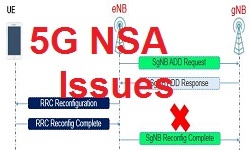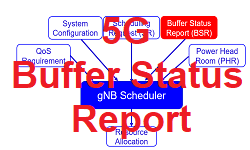5G Timing Advance | RAR TA and MAC-CE TA
Timing Advance
Timing Advance (TA) is a command sent by Base Station (BS) to UE to adjust its uplink transmission means that the UE sends UL symbols in advance according to command for i.e. PUSCH, PUCCH and SRS transmission. Timing Advance Command (TAC) informs the UE the amount of time that it needs to advance the UL transmissions.
Timing Advance Pointers:
- Timing Advance Command (TAC) two variant
- Initial Timing Advance Command (TAC) via RAR
- Timing Advance Command (TAC) via MAC-CE
- Initial TAC via RAR is about 12 bits and its value can range from 0 –3846
- TAC via MAC-CE is about 6 bits and its value can range from 0-63
- Timing Advance is control by MAC layer and implemented by Physical Layer
- Timing Advance value depend on the signal propagation delay from base station to UE i.e. different UEs located at different location will have different timing advance value.
- The timing advance command objective is to align the Uplink transmission from all the UEs to gNB
Following figure shows two UEs at different location, UE#1 has TA= 2* Tp1 and UE#2 has TA=2* Tp2, here Tp is signal propagation delay. gNB should send TA such that the Uplink from both the UEs uplink should reach to gNB at the same time.

Downlink and Uplink Timing Relation:
In wireless system, it is required to adjust the timing of the uplink frame in order to have alignment with the downlink frame in time domain. Uplink frame is transmitted by UE towards gNB whereas the downlink frame is transmitted by gNB towards UE. The timing control procedure is initiated by the MAC layer and conveyed to the PHY layer for time adjustment. See the figure below for the uplink and downlink transmission time relationship.

- NTA is the measured value sent to UE as part of TA Command.
- NTA ,Offset are fixed values that vary according to different frequency bands and subcarrier spacing
- Tc is known as the basic time unit for the 5G NR system
TA synchronization through TAC
- Initial Uplink Synchronization: The initial Uplink synchronization can be achieved through random access process. gNB send 12 bits TAC inside the Random Access response. In LTE, the TAC is 11 bits, and the RAR structure was slightly different as shown in below figure.


- Uplink Synchronization Update: Once the initial attach is complete, UE adjust UL transmission based on the MAC CE-Timing Advance. 5G NR use the same mechanism as LTE i.e. closed-loop to adjust the uplink TA. If a particular UE needs to be corrected, the gNB will send a TAC to the UE, requesting it to adjust the uplink transmission timing. The TAC is sent to the UE through the TAC MAC control element. TAC MAC CE is indicated by the MAC PDU subhead with the LCID value of 111101. LCID changed from 5 bits in LTE to 6 bits.

-
- TAC MAC CE has a fixed 8 bits and its structure is as follows:

-
-
- TAG Identity (TAG ID): TAG Identity is a 2 bits field indicates Timing Advance Group Identity. The TAG containing the SpCell has the TAG Identity as 0.
- Timing Advance Command (TAC): TAC length of the field is 6 bits, indicates the index value TA (0, 1, 2… 63) used to control the amount of timing adjustment that MAC entity has to apply.
-
How Timing Advance Command is applied?
UE save the latest TA adjustment value as NTA, old and when receive a new Timing Advance Command and obtains the TA, it calculates the latest timing adjustment value.

- If the UE receives the TAC in subframe n, then UE will apply the timing adjustment value from subframe n + 6.
- TAC Field is 6 bits which it can have 64 steps in total ranging from -32 to 32 Tc in real timing. As Tc is 0.509 ns, the range of the physical timing is 0.509*32= -16.28 us to 0.509*32=16.28 us
- If the PUCCH/PUSCH/SRS sent by the UE in the subframe n and the subframe n+1 overlap due to timing adjustment, the UE will completely transmit the content of the subframe n without transmitting the overlapped part in the subframe n+1.
UE judges uplink synchronization/out of synchronization at the MAC layer based on the timer called timeAlignmentTimer provided to UE through RRC signaling.
Related Post:
- 5G NR RACH Procedure Overview – CBRA and CFRA
- 5G NR RA-RNTI Calculation
- 5G NR Msg2 Random Access Response (RAR)



